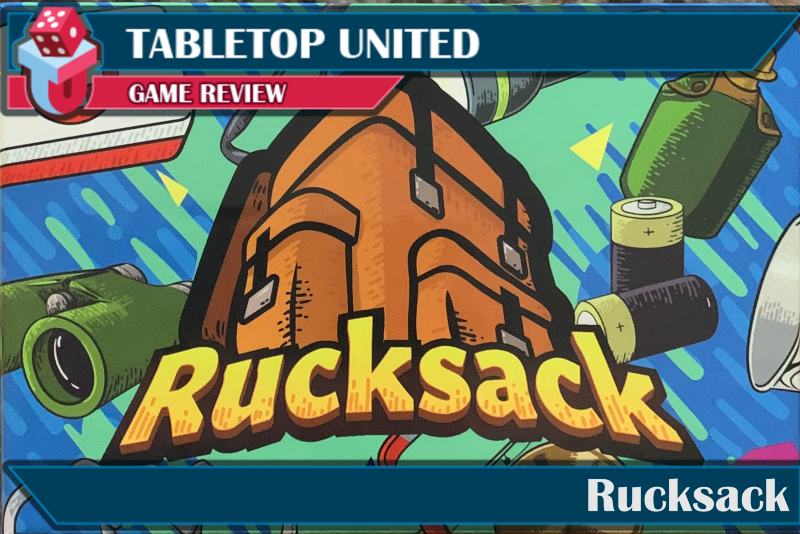
Rucksack
Designer: Joel David
Artist: Dan David
Publisher: Grumpy Spider Games
Year Published: 2020
No. of Players: 4–8
Ages: 10+
Playing Time: 30–60 Minutes
Main mechanic / Theme: Story Telling, Voting, Drafting / Party Game
Ever wanted to test yourself against MacGyver?
Find more info on BoardGameGeek.com
Overview
Rucksack is a story telling game where you are placed in a scenario with five items. It is your task to create a plan the rest of the players will vote as being the best. But they get to tell their plans also. And, they have different items in their rucksack.
Rucksack is designed to get your creative juices flowing and the storyteller has a captive audience. Because after hearing the plans, the group votes on which one was the best.
I pulled together a group of writers and players of role-playing games to see what they would come up with in this game of creative planning designs. Some of those plans were quite outrageous and everyone enjoyed what came out of the challenges.
Rucksack is a great game for anyone interested in creating plans that you usually only see coming out of some of the wonderful novels and short stories out there. I think it works best for a group of 4–6 players, but you need at least 3 to declare a winner of a round. This gave a lot a variety and moved things along at a pace that you could work on your plan along and remembering what the other players came up with.
The Scenario deck we used contained 50 cards. Some of the scenarios are duplicated, but we didn’t run into any duplicates while we were playing.
The item cards in the Rucksack deck totaled 100. There are items that are useful for the scenario, while others are tough to work in.
Gameplay and Mechanics
Decide who the starting player (head player) is. They draw a Scenario card, read it out loud and place it where everyone knows what it is. The scenarios vary widely. Some are of survival, others are exploration, and some started us out with, “How did I get here?”
Time to start building your plan.
Each player draws items out of their rucksack. The head player draws a card from the Items. They decide if they want to keep it or keep the next card. It’s one or the other and you have to decide without knowing what the next one is. Once they make their decision, they place the card face down in front of them and the next player is up.
Drawing cards continues in the same fashion. The only difference comes in when a discard pile has been started; for the rest of the phase of drawing cards the top card on the discard pile is also in play. A player has the option to first gather in the top card of the discard pile or draw.
Continue drawing till everyone has 5 cards.
The head player turns over their items and describes their plan how all five items are used in the scenario. Go around until all plans are presented and then vote on which one is the best.
The winner of the best plan wins a point. The Item cards are gathered and shuffled up. The next player is now the Head Player and a new round begins.
The first player to score 3 points wins.
Theme and Artwork
Story building and voting on the plan you like best. This did lead to some attempted bribery and favoritism, but it was all in good fun.
Basic art-this about the telling of the plan, not about looking at the cards. I like the fact the art was minimalistic. It allowed players to focus in on the plans instead of the artwork on the cards.
What worked
There is flexibility written into the rules to allow to make the game work better for the players you have at the table.
Final thoughts
Rucksack provided a good jumping off point for the creative personalities involved. Our group of writers jumped in from the beginning and enjoyed the evening of gameplay, gamesmanship, and creative one-upmanship.
I recommend Rucksack for players who like storytelling and voting for the best one told.
About the Author
Daniel Yocom does geeky things at night because his day job won't let him. This dates back to the 1960s through games, books, movies, and stranger things better shared in small groups. He's written hundreds of articles about these topics for his own blog, other websites, and magazines after extensive research along with short stories. His research includes attending conventions, sharing on panels and presentations, and road-tripping with his wife. Join him at guildmastergaming.blogspot.com.




